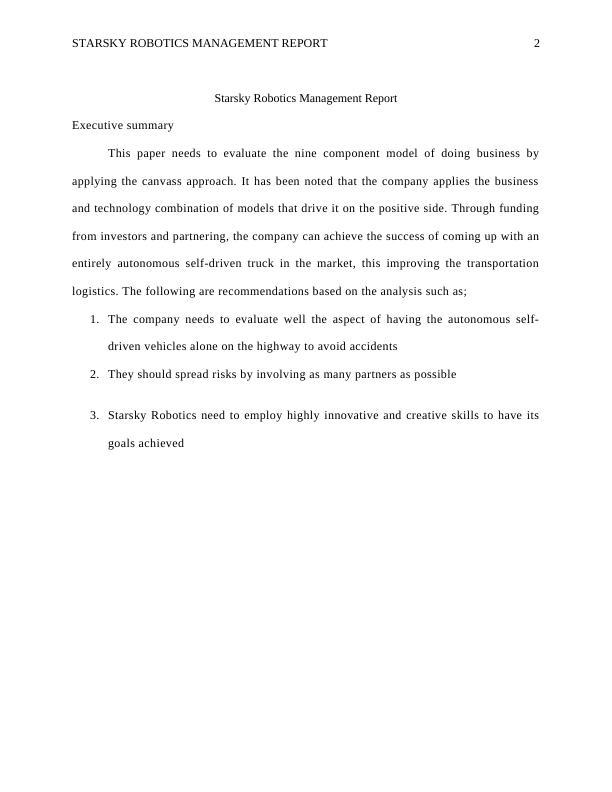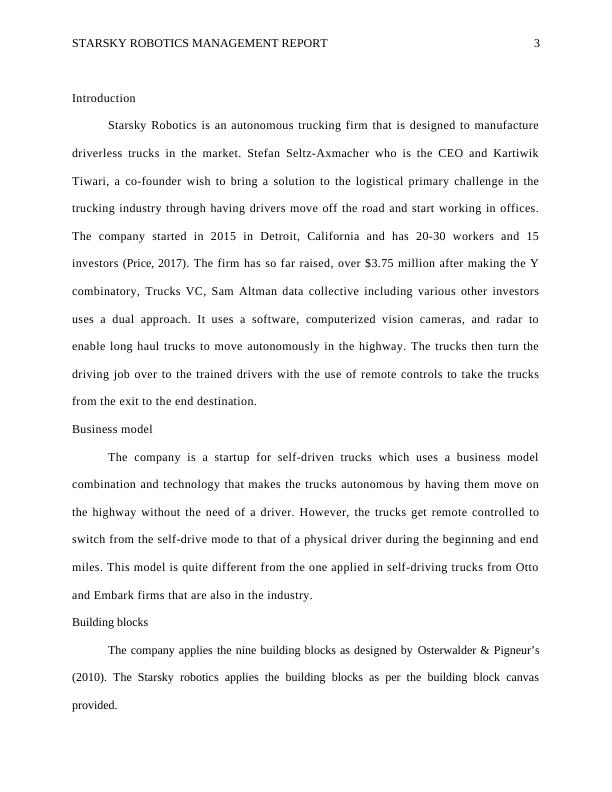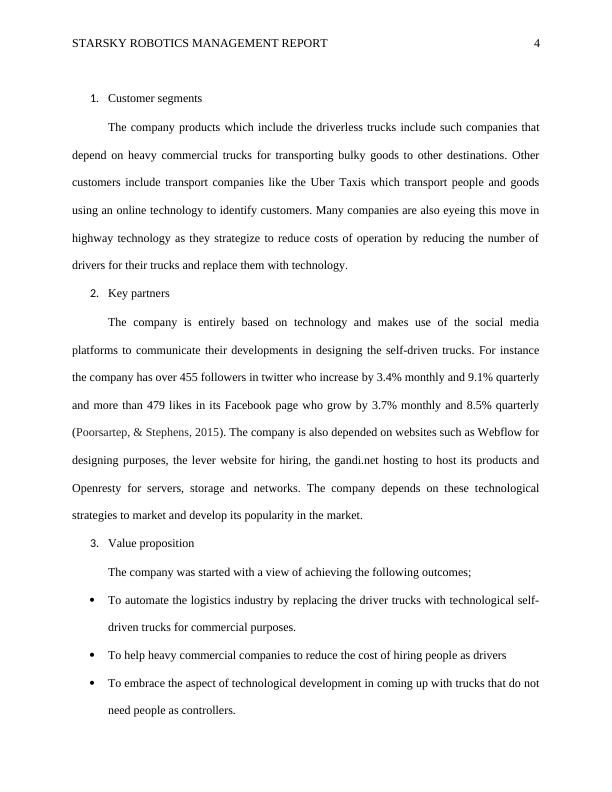Starsky Robotics Management Report
12 Pages2486 Words346 Views
Added on 2023-06-08
About This Document
This report evaluates the business model and technology of Starsky Robotics, a startup for self-driven trucks. It applies the nine building blocks of Osterwalder & Pigneur’s (2010) and recommends spreading risks, evaluating autonomous vehicles on highways, and employing innovative skills.
Starsky Robotics Management Report
Added on 2023-06-08
ShareRelated Documents
End of preview
Want to access all the pages? Upload your documents or become a member.
(PDF) Artificial Intelligence Based Autonomous Car
|15
|4443
|52
Business Model Deconstruction
|12
|2308
|234
Business Model Canvas Analysis of Google
|12
|2489
|75
U31220 - Digital Transformation (Group Reflective Report).
|22
|5111
|19
Business Report and Business Model Canvas for BMW
|11
|3439
|405




